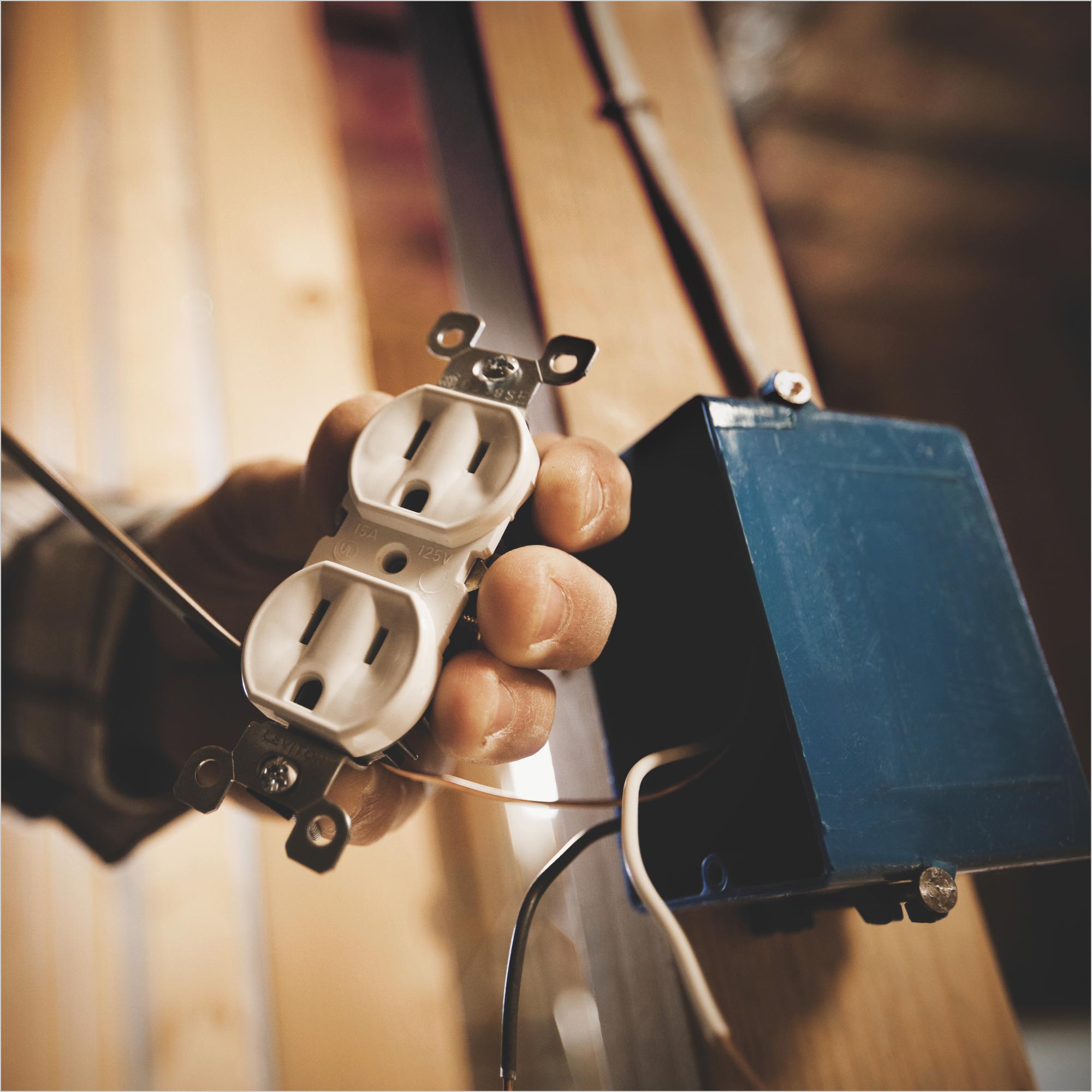A kitchen island does not necessarily need an outlet as it depends on the functionality and the construction of the island. However, an outlet on a kitchen island offers convenient access to electrical appliances, making it a popular choice for many homeowners who use their island as a cooking or preparation area.
Adding an outlet to the island provides flexibility in using small appliances such as blenders, mixers, or charging stations for electronic devices. Additionally, it allows for easier installation of built-in appliances such as a microwave or a dishwasher. While not mandatory, having an outlet on a kitchen island can greatly enhance its usefulness and practicality in a modern kitchen setting.
Importance Of Outlets In Kitchen Islands
Having a well-designed kitchen island is a popular choice among homeowners. It not only adds aesthetics but also serves as a functional space for meal preparation and hosting gatherings. When it comes to the functionality of a kitchen island, having outlets installed is a game-changer. Let’s explore the importance of outlets in kitchen islands.
Enhancing Functionality
Outlets in kitchen islands play a crucial role in enhancing their functionality. With outlets conveniently placed on the island, you can easily plug in various kitchen appliances and gadgets. Whether you need to blend a delicious smoothie or use a mixer for baking, having an outlet within arm’s reach can save you time and effort.
Furthermore, outlets on the island allow you to create a functional workspace. You can set up a laptop or tablet for following online recipes or catch up on emails while preparing meals. This multi-purpose use of the kitchen island makes it an invaluable asset for modern households.
Meeting Electrical Needs
Your kitchen island might require more electrical outlets than you initially realize. A single outlet may not be sufficient to power all your appliances and gadgets simultaneously. Having multiple outlets on the island ensures that you can efficiently meet your electrical needs.
From coffee makers to electric grills, having additional outlets provides the flexibility to use multiple appliances simultaneously. This is particularly useful when you are hosting parties or preparing elaborate meals. It eliminates the need for extension cords and promotes a safer, clutter-free cooking environment.
| Benefits of Outlets in Kitchen Islands |
|---|
| Flexibility in appliance usage |
| Convenient access to power sources |
| Enhanced productivity in the kitchen |
By installing outlets in your kitchen island, you can maximize productivity, reduce the inconvenience of limited power sources, and ensure a seamless culinary experience.
Conclusion
When designing your kitchen island, don’t overlook the importance of outlets. Consider your electrical needs, the flexibility they offer, and the convenience they bring to your cooking space. With outlets on your kitchen island, you’ll have the power you need right at your fingertips.
Building Codes And Regulations
A kitchen island is a functional and aesthetically pleasing addition to any kitchen. However, when it comes to the installation of electrical outlets, the regulations and building codes must be carefully considered. Understanding the National Electrical Code Requirements and local building codes is crucial to ensure the safety and compliance of the kitchen island design.
National Electrical Code Requirements
The National Electrical Code (NEC) provides standards for the safe installation of electrical wiring and equipment in the United States. According to the NEC, kitchen islands with built-in appliances or any countertop configuration require at least one receptacle outlet. The outlet must be installed within 12 inches of the countertop edge and should not be located more than 24 inches below the countertop surface.
Local Building Codes
In addition to the NEC, it’s important to consider local building codes and regulations when determining the need for outlets in a kitchen island. Local codes may have additional requirements or specifications that must be followed to ensure compliance and safety. Contacting the local building department or a qualified electrician can provide valuable insights into the specific requirements for outlets in kitchen islands based on the location.
Safety Considerations
When considering the installation of an outlet in a kitchen island, safety considerations should be at the forefront of your decision-making process. Adhering to safety regulations and measures not only ensures the wellbeing of those using the kitchen space but also prevents potential hazards and accidents. This section will delve into important safety considerations when deciding whether a kitchen island needs an outlet.
Preventing Overloading Circuits
Electrical outlets in a kitchen island are essential for providing power to small appliances or charging devices. However, it’s crucial to prevent overloading circuits that can lead to electrical fires or malfunctioning equipment. Designating separate circuits for the kitchen island outlets helps distribute the electrical load and minimizes the risk of overload.
Gfci Outlet Requirements
Ground Fault Circuit Interrupter (GFCI) outlets are a vital safety feature, especially in areas where water and electricity are in close proximity. According to electrical codes, GFCI outlets are required for kitchen island outlets to protect against electric shock. Ensuring that GFCI outlets are installed and regularly tested provides additional protection for individuals utilizing the kitchen island power source.

Credit: www.pinterest.com
Installation Options
When it comes to installing a kitchen island, one important factor to consider is whether or not to include an outlet. Having an outlet on your kitchen island can greatly enhance its functionality, making it easier to use various appliances and charge electronic devices. In this section, we will explore different installation options for adding outlets to your kitchen island.
Wiring During Construction
If you are in the process of building or remodeling your kitchen, it is the ideal time to install outlets in your kitchen island. This allows for seamless integration of the outlets into the island’s design, ensuring a clean and professional look. During the construction phase, an electrician can run the necessary wiring to the island, providing power for multiple outlets.
By planning ahead and considering your electrical needs, you can determine the optimal placement and number of outlets for your kitchen island. Whether you envision using it as a cooking station, a workspace, or a gathering spot, having outlets readily available can make a significant difference.
Adding Outlets To Existing Islands
If you already have a kitchen island but it lacks the convenience of electrical outlets, don’t worry. It is possible to add outlets to an existing island, although it may be a bit more challenging than during the construction phase. An electrician can still find a way to run the necessary wiring through the island and make the outlets discreetly blend in with the existing design.
- First, it is essential to determine the most strategic location for the outlets on your island. Consider the island’s layout, its distance from other electrical sources, and your specific needs.
- Next, you will need to hire a licensed electrician who can assess the existing wiring and create a plan for adding the outlets. They will take into account any building codes and regulations that need to be followed to ensure safety and compliance.
- Once the plan is in place, the electrician will carefully drill holes in the island’s surface to run the electrical wires. They will then install the outlets, connecting them to the wiring and ensuring proper grounding.
- After the outlets are installed, the electrician will test them to ensure they are functioning correctly and safely. They will also make any necessary adjustments to ensure a seamless integration with your kitchen island.
By following these steps and working with a professional, you can successfully add outlets to your existing kitchen island, increasing its convenience and versatility.
Design Integration
Design Integration:
An essential aspect of kitchen island design is the seamless integration of outlets for convenient access to power sources without compromising aesthetics.
Choosing Outlet Locations
- Consider the countertop edge for easy reach.
- Place outlets below overhangs to hide from view.
- Position outlets strategically near appliances.
Incorporating Outlets Seamlessly
- Opt for pop-up outlets for a clean look when not in use.
- Use matching outlet covers for a cohesive design.
- Install outlets vertically along the sides for discreet placement.

Credit: www.homedepot.com
Cost Considerations
H2>Cost Considerations
When considering the need for an outlet on your kitchen island, it’s essential to factor in the associated costs.
Installation Costs
Installing an outlet on a kitchen island typically costs between $200 to $600, depending on the complexity and location of the electrical work required.
Potential Savings
By including an outlet in your kitchen island, you may save on future renovation costs for additional electrical work that could arise from not having a readily accessible power source.
Future-proofing Your Kitchen Island
Future-proofing your kitchen island is a smart way to ensure that it remains functional and equipped to meet your needs both now and in the future. By considering the inclusion of technology and diverse power sources, you can make your kitchen island a versatile and well-prepared space for the years to come.
Considering Future Needs
When planning the layout of your kitchen island, it’s essential to consider your potential future needs. Anticipating lifestyle changes, growing family needs, or technological advancements will allow you to design a space that can adapt and evolve along with your requirements.
Technological Advancements
Advances in kitchen technology are continually evolving, and integrating these into your kitchen island can make it more functional and convenient. Features such as pop-up outlets, wireless charging stations, and USB ports can enhance the versatility of your kitchen island, allowing it to keep pace with the latest technological trends.
:max_bytes(150000):strip_icc()/kitchen-electrical-code-basics-1821527-hero-09fe7b0ecff34664aed19658e11cfd36.jpg)
Credit: www.thespruce.com
Frequently Asked Questions Of Does A Kitchen Island Need An Outlet
Is It Necessary To Have An Outlet On The Kitchen Island?
Yes, it is necessary to have an outlet on the kitchen island for convenience and safety. Having an outlet allows you to easily use small appliances and charge devices while working in the kitchen.
What Are The Electrical Code Requirements For Kitchen Island Outlets?
According to the electrical code, kitchen islands with a countertop longer than two feet or with a sink or cooktop require at least one outlet. It should be installed on the side or the end of the island, and there should be no more than 24 inches between outlets.
How Can I Add An Outlet To The Existing Kitchen Island?
You can add an outlet to the existing kitchen island by hiring a licensed electrician to install a new outlet, following the electrical code requirements. They will assess the island’s layout, access the wiring, and install the outlet for your convenience and safety.
Conclusion
Having an outlet on a kitchen island provides numerous benefits, including convenience and practicality. It allows for easy access to power sources for cooking appliances, charging devices, and even small appliances used for meal prep. Additionally, having an outlet on the island adds functionality and enhances the overall aesthetics of the kitchen.
This simple addition can transform the island into a multipurpose space, making it a valuable feature in any modern kitchen design.

Sohel Rana is a seasoned author whose passion for home and kitchen essentials permeates through his writing. Born and raised in a small town nestled amidst lush greenery, Rana’s fascination with the intricacies of domestic life blossomed from an early age. His upbringing in a close-knit family environment instilled in him a deep appreciation for the importance of a well-equipped kitchen and a cozy home

